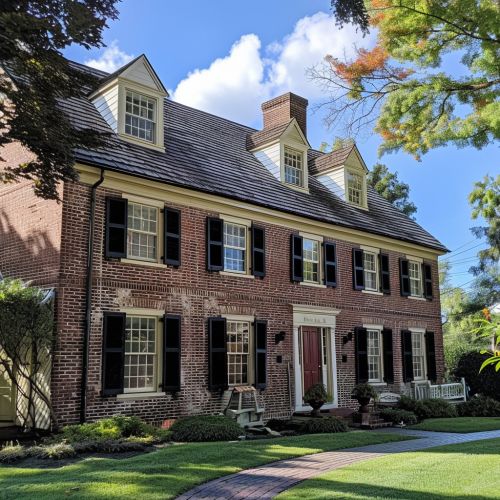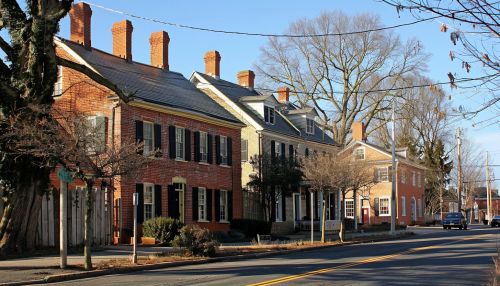Claymont, Delaware
History
Claymont, Delaware, is a census-designated place (CDP) in New Castle County. The area has a rich history that dates back to pre-colonial times. Originally inhabited by the Lenape Native Americans, the region was known for its fertile land and strategic location along the Delaware River. The first European settlers were Swedes and Finns who arrived in the mid-17th century, followed by the Dutch and then the English.
During the colonial period, Claymont became an important agricultural and industrial hub. The establishment of grist mills and ironworks in the 18th century spurred economic growth. By the 19th century, the area saw significant development with the advent of the railroad, which facilitated the transport of goods and people.


Industrial Era
The late 19th and early 20th centuries marked a period of industrialization for Claymont. The construction of the Claymont Steel Mill in 1910 was a pivotal moment, transforming the area into a major industrial center. The mill attracted a diverse workforce, contributing to the population growth and the development of residential neighborhoods.
Modern Developments
In the latter half of the 20th century, Claymont experienced both economic challenges and revitalization efforts. The decline of heavy industry led to economic downturns, but recent initiatives have focused on redevelopment and community improvement. The Claymont Renaissance, a comprehensive plan to revitalize the area, has led to new housing projects, commercial developments, and infrastructure improvements.
Geography
Claymont is situated in the northeastern part of New Castle County, bordered by the Delaware River to the east and the Pennsylvania state line to the north. The area covers approximately 2.1 square miles and features a mix of residential, commercial, and industrial zones. The Delaware River provides a natural boundary and has historically been a crucial waterway for trade and transportation.
The topography of Claymont is characterized by gently rolling hills and flat riverbanks. The region's climate is classified as humid subtropical, with hot summers and mild winters. This climate supports a diverse range of flora and fauna, contributing to the area's natural beauty.
Demographics
According to the latest census data, Claymont has a population of approximately 8,253 residents. The community is diverse, with a mix of ethnicities and cultural backgrounds. The median age is 38 years, and the area has a balanced gender distribution.
The economic profile of Claymont reveals a median household income of $60,000, with a significant portion of the workforce employed in the service sector, retail, and light manufacturing. The area also has a growing number of professionals working in healthcare, education, and technology.
Education
Claymont is served by the Brandywine School District, which operates several public schools in the area. Notable institutions include Claymont Elementary School and Talley Middle School. The district is known for its commitment to academic excellence and offers a range of programs to support student achievement.
In addition to public schools, Claymont is home to several private and parochial schools. The area also has access to higher education institutions, including Wilmington University and Delaware Technical Community College, which offer a variety of degree programs and continuing education opportunities.
Economy
The economy of Claymont has evolved significantly over the years. Historically an industrial hub, the area has diversified its economic base to include retail, healthcare, and professional services. The Claymont Steel Mill, once a major employer, has been repurposed for mixed-use development, attracting new businesses and residents.
Retail is a significant sector in Claymont, with several shopping centers and local businesses providing goods and services to the community. Healthcare is another growing industry, with facilities like the Claymont Health Center offering comprehensive medical services.
Transportation
Claymont is well-connected by a network of highways, railroads, and public transportation options. The area is served by Interstate 95, which provides easy access to major cities like Philadelphia and Wilmington. The Claymont Train Station is a key transportation hub, offering SEPTA and Amtrak services.
Public transportation is also available through the Delaware Transit Corporation (DART), which operates several bus routes in and around Claymont. These transportation options make Claymont a convenient location for commuters and travelers.
Culture and Community
Claymont boasts a vibrant cultural scene with a variety of community events, recreational activities, and historical landmarks. The Claymont Stone School, one of the oldest public schools in Delaware, is a notable historical site. The school has been preserved as a museum and community center, offering educational programs and cultural events.
The area also has several parks and recreational facilities, including the Claymont Community Center and the Darley House, which provide spaces for sports, fitness, and community gatherings. The annual Claymont Christmas Parade is a popular event that brings together residents and visitors for a festive celebration.
Notable Residents
Claymont has been home to several notable individuals, including Joe Biden, the 46th President of the United States, who spent part of his childhood in the area. Other prominent figures include David P. Buckson, a former Governor of Delaware, and John Darley, a notable 19th-century artist whose work has been recognized for its historical significance.
